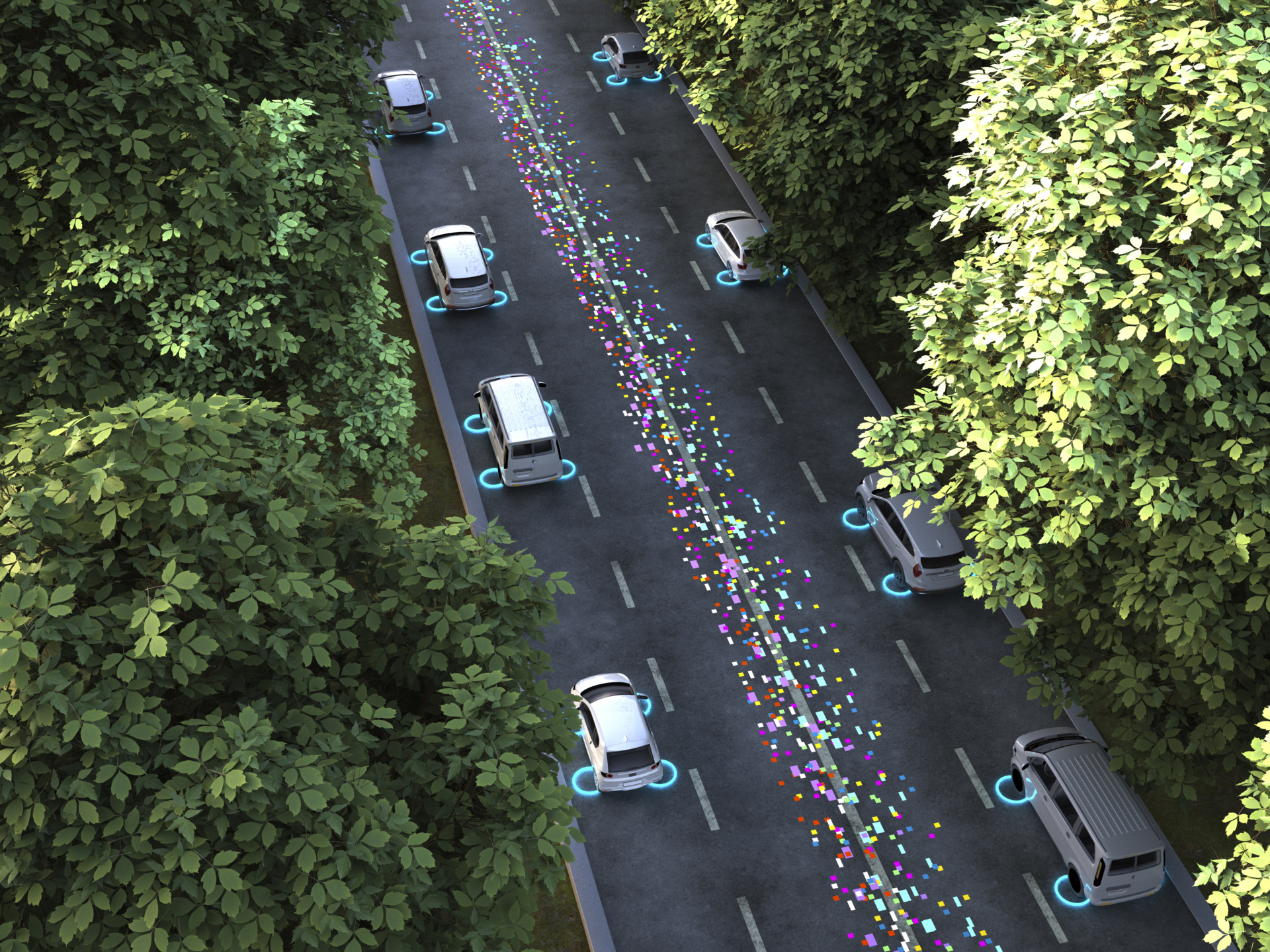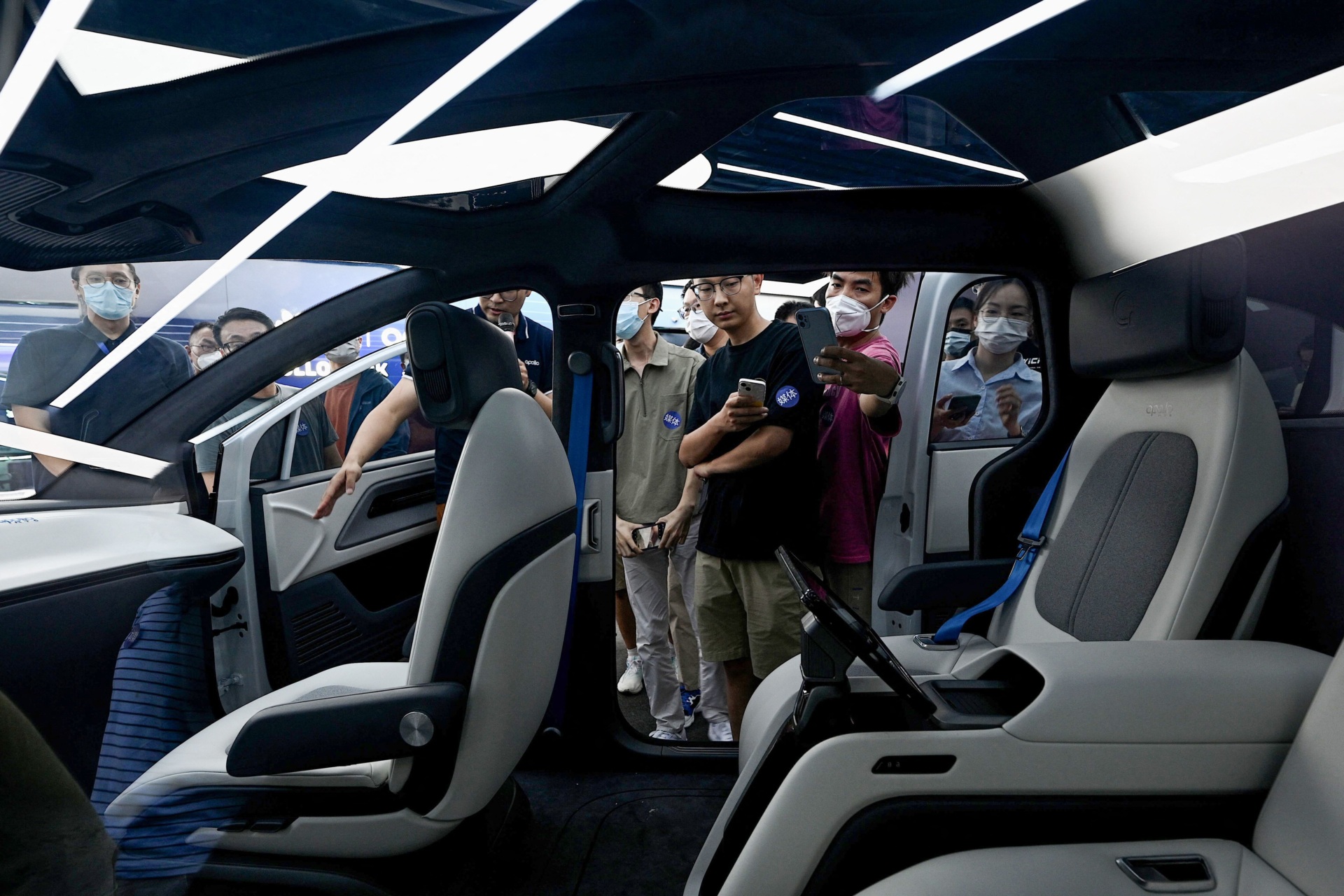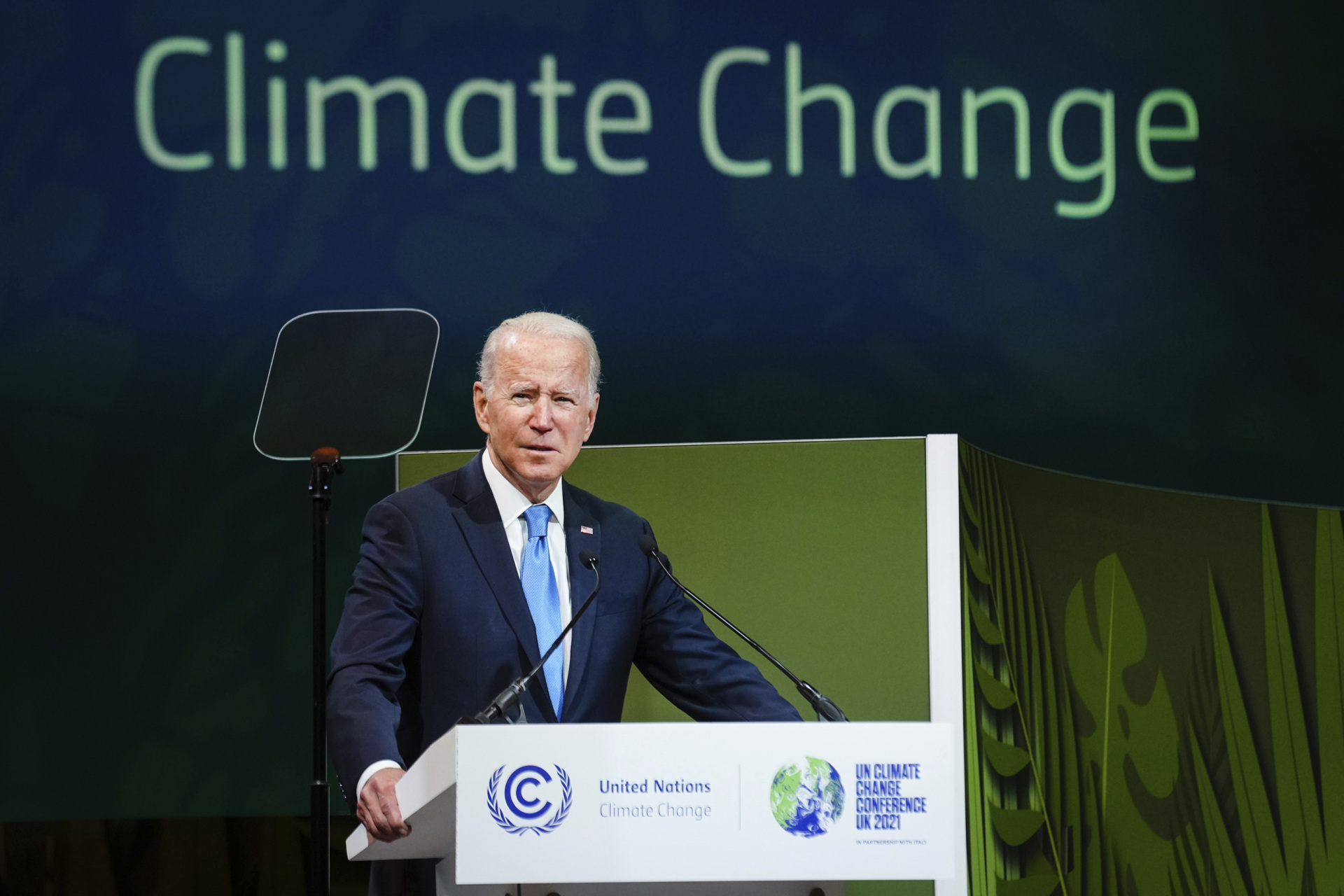
Greens (and Reds) Don’t Like Cars, Period
Late last month, Joe Biden was mocked for posting a photo of himself in an electric vehicle (a GMC Hummer) that costs $110,000 and up. And for touting a $7,500 federal tax credit that doesn’t apply to vehicles that cost over $80,000. In other words, the 46th president was ripped for confirming the stereotype that electric cars are a vanity passion for rich green liberals.
But what was less noticed, at least by the right, was that left-wing greens didn’t like Biden’s photo-op, either. You see, Middle Class Joe insists that he wants to replace internal-combustion vehicles with electric vehicles (EV), but the hardcore greens–including those within his own administration–want to get rid of cars, period. At certain times, as when he is trying to appeal to the far left during his campaign for the 2020 Democratic nomination, Biden has said that he wants to get “millions of vehicles off the road.” But that was then: Now Biden, eyeing his re-election campaign, wants to play the champion of Main Street, where they have cars, not the New York City Metropolitan Transportation Authority.
On my watch, the great American road trip is going to be fully electrified.
And now, through a tax credit, you can get up to $7,500 on a new electric vehicle. pic.twitter.com/n3iZ9etL4A
— President Biden (@POTUS) January 30, 2023
Still, history shows that when green activists draw a bead on something, they often hit their target. That’s been the whole story of the green movement this past half-century, as it has shifted the Democratic Party from its New Deal blue-collar orientation to its current affluent-suburban affectation.
One of the greens’ key concerns about EVs is lithium. As we shall see, they can’t live without it, but they also can’t live with it.
The World Economic Forum (WEF, think Klaus Schwab and Davos) relates that each EV battery needs about 18 lbs of lithium. And since WEF calculates that two billion EVs will have to be on the road by 2050 to meet its Great Reset climate targets, that’s a lot of lithium. And of course, all the lithium a Great Resetted world needs won’t just go into car batteries; the element is needed for wide variety of industrial and ecological uses.
But lithium production is currently only about 100,000 tons annually, so WEF’s projections show that the needed ramp-up in lithium production will have to be, well, exponential. For their part, greens don’t like to hear about the exponential growth of anything economic.
A particular flashpoint has been the effort to start up a lithium mine in Thacker Pass, Nevada, near the Oregon border. That proposed $3 billion venture has been met by pushback from a coalition of greens, Native Americans, and NIMBYs. Needless to say, that was all the signal the Main Stream Media needed to choose a side. NBC News headlined last year: “The cost of green energy: The nation’s biggest lithium mine may be going up on a site sacred to Native Americans.” And The New York Times added some more green liberal perspective:
The fight over the Nevada mine is emblematic of a fundamental tension surfacing around the world: Electric cars and renewable energy may not be as green as they appear. Production of raw materials like lithium, cobalt and nickel that are essential to these technologies are often ruinous to land, water, wildlife and people.
For its part, the Biden administration, mindful of its environmentalist base as well as its EV goals, has tried to avoid taking sides on the fight. Just on February 7, a federal judge ordered a further review of the project, so its future is unclear.

Thacker Pass in Nevada, the proposed site for a massive lithium mine. (Carolyn Cole/Los Angeles Times via Getty Images)

Members of the Fort McDermitt Paiute Shoshone tribe and supporters gather for a circle dance for healing during a gather in opposition to the proposed lithium mine at Thacker Pass, Nevada, which has historical significance for the tribe. (Carolyn Cole/Los Angeles Times via Getty Images)
The hardcore greens want action against lithium—and against EVs and against the Biden administration. One such is Kate Aronoff, who writes for The New Republic, a venerable liberal publication, dating back to 1914, that has lately gone woke and left, as well as hard green. Aronoff tweeted her own mockery of Biden for his Hummer tweet and then wrote in her magazine, “Investing in mass transit, walkability, biking infrastructure, and other means of reducing personal car ownership . . . could reduce the amount of lithium needed.”
This roughly $100,000 Hummer does not appear to qualify for the tax credit this tweet is advertising, which cuts off at $80,000 for SUVs https://t.co/Msd1PGvcO3 https://t.co/SMX5aSF3IB
— Kate Aronoff (@KateAronoff) January 31, 2023
Warming to her anti-auto theme, Aronoff lamented that cars and trucks are getting bigger: “The best-selling vehicle in the U.S., the F150 Ford pickup truck, has ballooned in size since it debuted in the 1970s . . . Even the comparatively diminutive Mini Cooper has gotten 64 percent heavier since it debuted in the 1950s, and 61 percent larger.” To Aronoff, this is all part of the grave crisis; indeed, the section of the magazine that she writes for is called “Apocalypse Soon” (see below).
Moreover, Aronoff is not just worried about lithium, or the size of cars—she’s worried about cars themselves. In her article she cited Andre Gorz, a 20th century French Marxist, who wrote in 1973, “The worst thing about cars is that they are like castles or villas by the sea: luxury goods invented for the exclusive pleasure of a very rich minority, and which in conception and nature were never intended for the people.” So we can see: 50 years ago, Gorz was a red who thought cars were only for rich people. (As a general rule, Marxists need to get out more.)
Yet now, long after his death, Gorz and his anti-auto sentiments, which were based on red commie class warfare, have been drafted into a new kind of class warfare: the green cause of depriving the proletariat of its preferred mode of transportation. It’s this sort of intellectual fusion–red and green–that has led critics to refer to greens as “watermelons.” In fact, in 2021, Aronoff published a watermelon-y book entitled, Overheated: How Capitalism Broke the Planet–And How We Fight Back. (Back in 2014, the like-minded Naomi Klein published a book with the subtitle, “Capitalism vs. the Climate”; and there’re many more similar titles in that watermelon patch.)
But our focus today is not the class struggle, but rather, the car struggle. Which is ongoing. In January, a lefty-green group, the Climate + Community Project (CCP) called for “less mining” and, of course, fewer cars:
Reordering the US transportation system through policy and spending shifts to prioritize public and active transit while reducing car dependency can also ensure transit equity, protect ecosystems, respect Indigenous rights, and meet the demands of global justice
Not surprisingly, when CCP outlined its plan for a Green New Deal, the personal car gets it with both barrels:
Transportation often exacerbates social inequity and racial injustice within and between communities. Its infrastructure speeds the movement of those who are better off, to the detriment of those who are most in need. In far too many communities, governments, planners, and engineers prioritize vehicles over people.
(For what it’s worth, CCP is careful to provide the proper pronouns for its staff, and bills itself as being financed by the Tides Center, which Breitbart News has covered extensively, if not admiringly.)
Car Companies Look Beyond Cars
So where does this anti-car movement leave the automakers? They have to be careful, because while they are in the car-manufacturing industry, they are also in the government-subsidy-collecting industry. For instance, General Motors declared Chapter 11 bankruptcy in 2009, and was subsequently saved by $51 billion in federal help. Since then, all the automakers have been immersed in myriad green subsidies, leaving them extraordinarily attuned to whatever Washington wants.
This ongoing boondoggling led Sen. John Thune (R-SD) to gripe in 2022: “American automakers have been on the receiving end of historic amounts of taxpayer money, yet we see them raising vehicle prices right when they’re preparing to receive even more government support.” So the South Dakotan proposed a legislative remedy: “My common-sense bill would make automakers choose between grants and loans that subsidize their manufacturing operations or having the vehicles they make remain eligible for the expanded electric vehicle tax credit. Automakers shouldn’t be able to double-dip at taxpayers’ expense.” Thune’s bill did not pass.
One leading auto expert sees the day when the automakers will be phasing out of cars as we have known them. In a 2017 essay about the future of automation, Bob Lutz, a Detroit legend, connected EV to AV (autonomous vehicles). In Lutz’s view, cars of the future will not be cars, they’ll be “modules” in a mass-transit fleet, a kind of blend of Uber and a bus company. Lutz, born in 1932, is himself an old-time car enthusiast—a “gearhead”—and so he didn’t pretend to be happy about such a development. As he wrote in Auto News, “Everyone will have five years to get their car off the road or sell it for scrap or trade it on a module.” In other words, the Little Deuce Coupe—or any other kind of car that speaks to individualism and the freedom of the open road—will be replaced by Big Brother and the Driving Company, controlled by some combination of the Department of Transportation and Silicon Valley. Sound good to you?

A illustration conceptualizing a smart city grid with autonomous vehicles. (iStock/Getty Images)
Still, it sounds good to some. Some in the cities won’t mind—not much privacy in a metropolis, anyway. As one recent headline trilled, “Car-free futures: How European cities are embracing green transport.” It is certainly true, of course, that it’s common for people living in dense cities not to have cars. And yet here in the U.S., less than 20 percent of the population lives in the 100 biggest cities—not all of which are dense. But to put that another way, more than 80 percent of us live in places where cars are for sure a necessity—and autonomy, too, is nice. As an aside, have you noticed that the same people pushing transport “modules” have also been pushing Covid lockdowns, mask mandates, and vaccination requirements? There is a commonality of control.

Journalists look at the interior of Baidu’s Apollo RT6 next-generation autonomous vehicle during its unveiling in Beijing on July 20, 2022. The Apollo RT6 is designed for fully autonomous driving with detachable steering wheel, and is set to join the Apollo Go ride-hailing service starting in 2023. (NOEL CELIS/AFP via Getty Images)
Indeed, the anti-auto momentum of the green left is growing. And here again, the big automakers are complicit. In 2018, Ford Motor Company announced plans for an “inclusive, vibrant, walkable mobility innovation district.” [emphasis added] In other words, Ford seems to be okay with a post-private-car future, especially if the greens continue to shower it with greenback subsidies.
Indeed, it’s even possible that the phrase “auto maker” will become obsolete, as the manufacturers transition themselves into some sort of Uber-ish new business model, enabling them to abandon actual auto workers, trading them in for cheaper cubicle people.
One who caught this anti-car trend early was Donald Trump. In 2019 the then-president told a crowd, “They want you to have one car instead of two, and it should be electric, OK? So tell people, no more cars. No more cars.”
But of course, when they say no more cars, they don’t mean no more cars for themselves. And here we’re not just talking about such lifetime limousine riders as Biden and John Kerry. In 2019, The New York Post reported on Rep. Alexandria Ocasio-Cortez (D-NY): “Since declaring her candidacy in May 2017, Ocasio-Cortez’s campaign heavily relied on those combustion-engine cars—even though a subway station was just 138 feet from her Elmhurst campaign office.” It seems that in just a two-year period, AOC took more than a thousand trips on Uber and other app-ride platforms.
Of course, fewer cars on the road is good for those who still have cars. So, if all goes according to plan, Biden, Kerry, AOC, and the Davos crowd can look forward to zipping along in emptier streets.
Joe Biden’s Legacy
At least through Election Day, 2024, Biden will insist that he’s in favor of personal cars, tilted, of course, toward EVs. But after that, who knows, because as Biden says, the climate crisis is an “existential threat.” So with all that weighing on him, don’t be surprised if a second-term Biden administration—if there is one—takes a turn toward building his “legacy,” which will be defined as harder-core greenism. As one ally of the Biden administration said to Politico last year:
Do you know how many cryptocommunists are now working for the Biden administration? How many former Bernie Sanders staffers who are pretty f—ing deep in the White House’s policy nexus? The revolutionary socialist phase has kind of faded for the left. But the flip side of that is that a lot of those people have infiltrated to the highest levels of Democratic politics.
As they say, personnel is policy. So if Biden wins re-election, in 2025 we can expect a tighter squeeze on personal cars—either because they emit too much carbon or require too much lithium—and a greater emphasis on “modules” and other kinds of mass-transit.
This is how Biden can grasp for the title of Greenest President in History. That might not seem like such a great title to you, dear reader, but you don’t face the prospect of funding a presidential library.

President Joe Biden speaks during the UN Climate Change Conference COP26 in Glasgow, Scotland, on Nov. 2, 2021. (Erin Schaff/The New York Times via AP)
In the meantime, here at Breitbart News, this author has warned that the greens were not going to give up on another of their long-term goals, getting rid of gas stoves. And in fact, just in the past few weeks, there’s been a flurry of green reports and MSM touts, as well as scoops from Fox News and Bloomberg News on ongoing Biden administration efforts to snuff out stoves. A headline on February 6: “U.S. officials eye new route to ban gas stoves.” On February 7, The Boston Globe expanded the green’s anti-household agenda beyond stoves, worrying that “cooking appliances aren’t the only household items that run on methane gas,” and citing the menace of furnaces, water heaters, and fireplaces. “We should be very concerned,” said one worrier to the Globe. (Happily, there’s also pushback–even pushback you can wear.)
You see, the greens and their climate modelers are sure that they everything figured–and so we have to do it their way. So even truly startling development–such as the news, reported on February 10, that a piece of the sun had broken off creating a tornado-like twirl on the sun’s surface, and is something that nobody had in their model–will have no effect on the declared need to save you from your gas stove. Indeed, as the greens get more aggressive, they’re coming, too, for your lawnmower. And needless to say, green zealots such as Greta Thunberg oppose everything.
Yes, they’re still coming for your stove. And they want your car, too.






